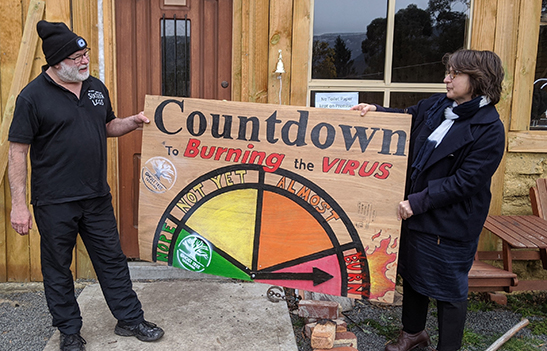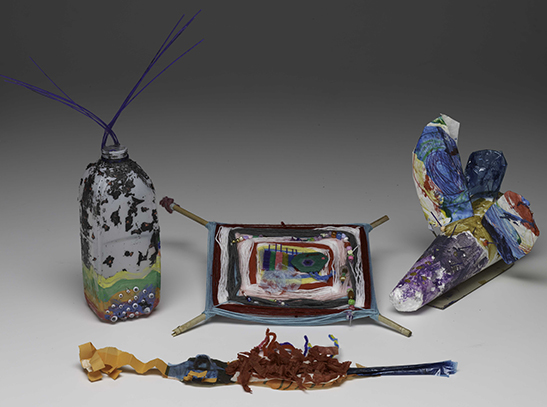COVID-19 Stories Project Update

A diverse and fascinating array of objects has already been added to the Tasmanian Museum and Art Gallery (TMAG) Collection to help document the Tasmanian community’s experiences of the COVID-19 pandemic.
The items have been collected through the COVID-19 Stories Project, a partnership between TMAG and Libraries Tasmania, which aims to capture the impact of this historic event on the lives and livelihoods of everyday Tasmanians to create a collective memory for the future.
TMAG’s Cultural Heritage team has been working with 16 donors to build the museum’s contemporary COVID-19 collection, focussing on personal stories and community.
To date, the collection captures the experiences of children and young people, the responses of local community centres, entrepreneurial innovation, the impact of the pandemic on international and interstate travel, the community provision of handcrafted PPE, and attempts to inject some humour and positivity into a grim situation.
Senior Curator of Cultural Heritage, Kirstie Ross, says it is important that TMAG collects these items and their stories now, so that future generations can appreciate how Tasmanians lived through the pandemic.
“The things that we are preserving at TMAG provide tangible evidence of how Tasmanians have adapted, and have had to adapt, to this lethal and invisible virus which has disrupted so much of what we take for granted,” Kirstie says.
New acquisitions include four COVID-19 ‘superbugs’, constructed by young Tasmanians Clara, Sophie, Willa and Xavier Johnson. They have given each of their superbugs a common name and a scientific one, as well as a description of the process of eradication.
Sophie’s Fire Wire (Ignisoculii) catches the Corona by putting it into a fire. And according to her sister Willa, “Coronavirus is like cake” for her Spectrum Bug (Numerum Unico Pedecimex).
Another key object is the countdown sign from the ‘virus burning’ community event held at the Longley International Hotel at the end of July. The sign indicated the build-up towards a ceremonial burning of a large wooden coronavirus effigy, which had a rough map of the globe drawn on the exterior and was covered with the distinctive SARS-CoV-2 protrusions.
As David Dieckfoss, the maker and the donor of the sign, told the ABC, they thought “if we could burn this dirty, big virus it'd be good for people, and good for the pub, and good for the community”.
“While TMAG obviously couldn’t collect the burnt effigy, we thought the sign could represent it and the community’s expression of positivity,” Kirstie says.
TMAG’s Cultural Heritage team remains keen to hear from anyone in the Tasmanian community who has an object they would like to donate, whether it relates to official responses to the pandemic or something that has brought you comfort at home.
To make a submission, email the COVID-19 Stories Project team at COVID19stories@education.tas.gov.au with details of your object and the story it tells, a photograph of it, and your contact details.
The team will reply to you either by email or phone. If your submission is accepted, TMAG’s Cultural Heritage team will ask you to complete a donation/gift agreement and will organise the best way to receive your item(s).

Image details:
(top) Kirstie Ross collecting the ‘Countdown to Burning the Virus’ sign from David Dieckfoss, that he made to mark the approaching incineration of the wooden coronavirus effigy at the Longley International Hotel.
(bottom) The COVID-19 ‘superbugs’ created by the Johnson family. 12-year-old Willa’s Spectrum Bug (Scientific Name: Numerum Unico Pedecimex), 10-year-old Sophie’s Fire Wire (Scientific Name: Ignisoculii), 7-year-old Clara’s double eyed fly (Oculis Multarum) and 3-year-old Xavier’s Long Nose (Longum Nasum).

